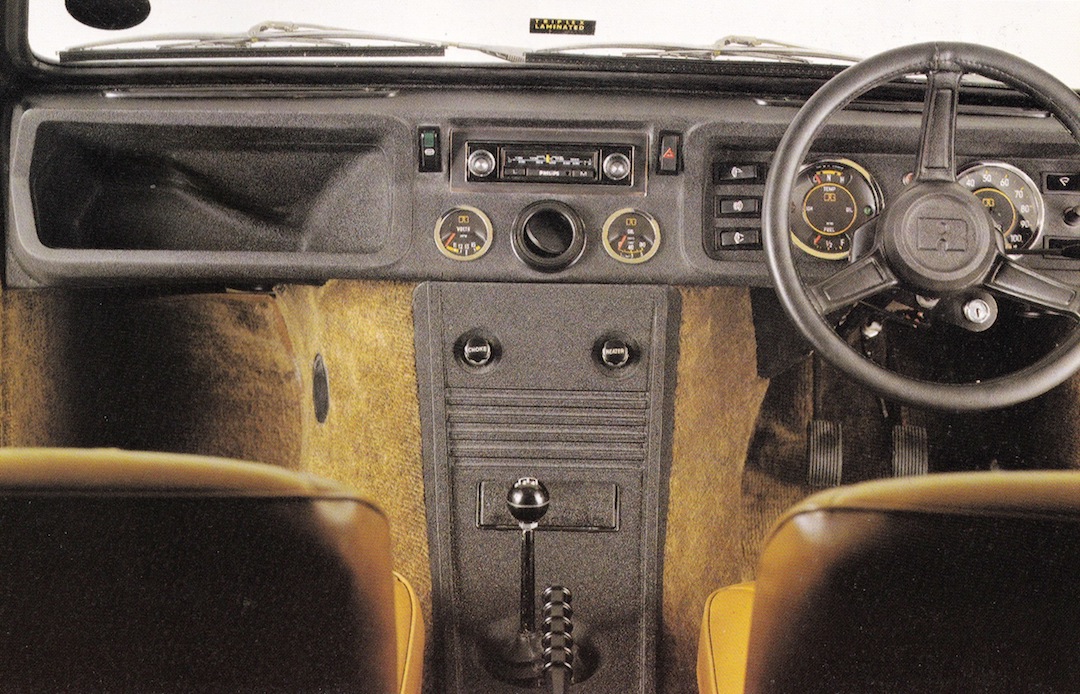"We called it Charles the First because it was a Cavalier. These days it’s the sort of vehicular relic you see slumped in the corner of a field at a provincial car boot sale, boot open to reveal old "

Reliant Robin
Tempted by a Robin?
There used to be certain ‘types’ who drove Reliant Robin three-wheelers.
There were huge, hairy bikers who wanted something that kept the weather out and could be driven on a motorcycle license. Then there were tiny, often toothless pensionable men with bottle glasses and flat hats, who pottered along at about 25mph. In their passenger seats were usually very large, cross-looking women with pink fluffy tops and stiff, permed ‘crash helmet’ hair. Then there was me.

As Tony Blair entered Downing Street and the likes of Liam Gallagher and Damon Albarn were young blades at the start of their Britpop careers, I bought a Robin, circa 1978, for £150. The vendor was a heavily bearded man who’d bought it as something to take his children to school in. They’d refused, so he’d filled it with hedge clippings, which I had to clear before driving the thing home, discovering in the process that I suffered from hay fever.
The car was bright yellow, except for one red door. A piece of coat hanger helped attach its exhaust to its underside and the single front wheel was out of alignment so rubbed against its axle tube.
The thing rode and handled like a wheelbarrow and I only bought it because Top Gear magazine wanted someone to drive around France visiting indigenous microcar factories, and the editor, who clearly had a sadistic streak, said that as the Robin was the British microcar equivalent, I should go in one.
Mine needed some fettling and I’d just returned from a delightful specialist called Mac Motorcycles of Tooting, which still exists. A Mac mechanic had looked over my awful little chariot and said that yes, he could fix it.
Having got home and had a cup of tea to help restore my metabolism after driving the bloody thing I came back to the Robin and tried to fire it up.

The starter motor sounded sluggish, making slow churning noises that reminded me of a drunk being sick in a gutter. I paused then turned the key once more. There was another, sickly ‘whir-whir’ noise followed by a sort of ‘whump’ sound you’d associate with a gas cooker lighting, which was appropriate. The engine sits in a cramped little box behind the front wheel and more or less between the driver and passenger seats. The panel at the end of this jerked forward, flames shot out from behind it, licked the knees of my trousers and set light to the wiring under the dashboard.
‘Oh bother,’ I said, hastily exited the car and called the fire brigade. When the fire engine arrived, all shrieking sirens and strobing blue lights, the Robin was blazing merrily. The roof lining was alight and the windscreen had shattered.
It took about five minutes to douse the inferno, and as the remains of my Robin hissed, smouldered and steamed one fireman said that such events used to be regular occurrences when Britain’s roads were cluttered with the things.
“We’d get called out to one of these every week,” he said.
Although mechanically crude, Robins were little bastards to work on, because their engines were stuffed into that cramped box, with tiny removable hatches that didn’t quite give access to things that needed regular maintenance.
Owners tended to be older and found manipulating mechanical bits with arthritic fingers wasn’t easy. Some had very little money so skipped maintenance, leading to leaky fuel lines, and arcing spark plug leads in a confined space shared with a fug of fuel vapour and oxygen. The result was external combustion, which in a fibreglass, flammable car was usually terminal and spectacular.
As the wreckage was loaded onto a scrap lorry, the fireman fondly recalled one immolated Robin with a body whose fibreglass weave had parted company from the gel coat, leaving a translucent, sugar icing-like outline of the car. When prodded with a finger this apparently shattered.
We both agreed the Robin was truly awful.
“Never mind,” said the fireman, as mine headed for its doom, “Now there’s one less.”
Cutaway and interior images: credit Giles Chapman archive
CLICK TO ENLARGE










